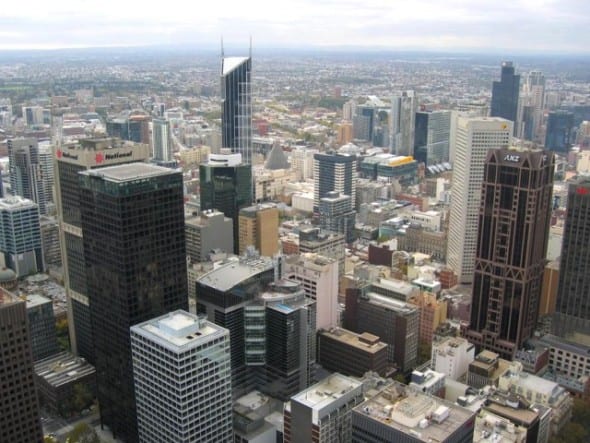A City of Melbourne-led initiative to drive the development of local renewable energy capacity is preparing to go to market, with a series of industry briefings this month, and the release of tender documents in the New Year.

The Melbourne Renewable Energy Project – a collaborative effort including the University of Melbourne, RMIT, NEXTDC, the City of Port Phillip, Moreland City Council, Federation Square, Citywide and Bank Australia – aims to support the development of a new renewable energy plant that will supply energy to the group at a competitive rate.
The concept was first floated more than a year ago, with the launch of a Request for Information in November 2014.
Then, Melbourne Lord Mayor Robert said the idea was to combine the purchasing power of the various stakeholders and “signal our interest in securing a competitive price for a long-term electricity supply from renewable sources.”
The City of Melbourne has dual goals of 25 per cent renewable electricity by 2018, and zero net emissions by 2020. Currently, only 12 per cent of Victoria’s electricity is derived from renewable energy. 
“Diversifying our energy supply and supporting innovation is a must for the future of our city,” said Doyle in a statement on Monday.
“Our group aims to purchase 120GWh of energy. That’s enough to power more than 31,000 households in Melbourne for a year,” he said.
“We expect this project will provide a major boost to employment within the renewable energy sector. Up to 140 jobs will be created in the construction phase and 12 ongoing jobs in operation and management of the plant.”
The tender hopes to attract new renewable energy projects that are shovel-ready and have planning approvals in place.
Chair of the City of Melbourne’s Environment Portfolio, Councillor Arron Wood said the Request for Information process had resulted in widespread interest from Australian and international companies operating in the wind, solar and biomass sectors.
“We have extensively tested the renewable market to gauge the viability of a group purchasing approach and the market has responded with a resounding ‘yes’,” Cr Wood said.
“Transitioning to a clean energy future is not only good for the environment; it’s a smart long-term business decision.
“We hope to see other organisations replicate the group purchasing approach to drive new investment in renewable energy.”
Energy industry suppliers who want to know more about the 2016 tender can attend the supplier tender briefing session on 15 December at the City of Melbourne Town Hall Supper Room.










